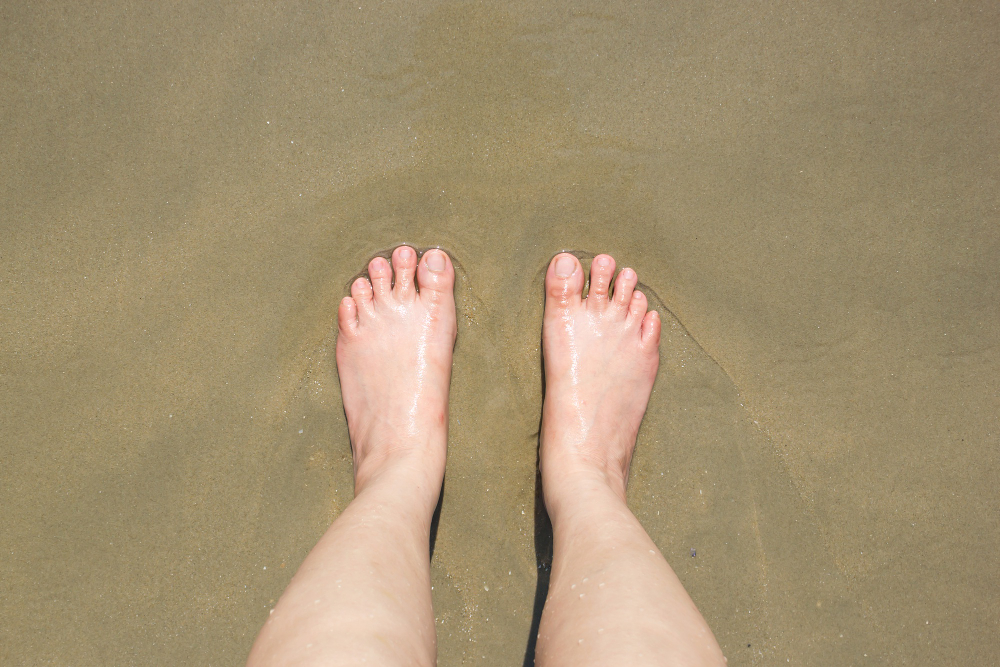Understanding Flat Feet

Types of Flat Feet
Flat feet may take different forms. These include:
- Flexible: In this case, the arch is visible when there is no weight placed on the feet and disappears when the feet are bearing weight. This condition typically develops in the teenage years and may limit the amount the feet can flex and, in some cases, cause pain. This is the most common form of the condition. The condition may gradually get worse with age. It usually affects both feet.
- Rigid: In this case, there is no arch whether there is weight on the feet or not. The condition, which could cause pain or limit the flexing of the feet, typically develops during the teenage years. The condition may affect one or both feet.
- Adult-Acquired: This is when a person has normal arches that unexpectedly collapse, leaving the feet flat. The common cause of this is damage to the leg tendon that supports the arch. The condition may affect one or both feet and may also cause the feet to turn outwards and cause pain.
- Birth Defect: A congenital disability called vertical talus in which the talus bone in the ankle is displaced can result in the bottom of the feet having an inverted arch which is why it is also called “ricker bottom foot”. The condition may affect one or both feet.
Causes of Flat Feet
Flatfeet may be hereditary or may be caused by injury or disease. Among the most common non-genetic causes are:
- Broken bones in the legs or ankles
- Injuries to the Achille’s tendon
- Diabetes
- Cerebral palsy
- High blood pressure
- Obesity
- Down syndrome
- Rheumatoid arthritis
- Pregnancy
Also Read: Treating Sports Injuries | RICE Treatment | Risk Factors and Prevention
If you suffer from flat feet as a result of any of these medical conditions, a doctor will be able to explain the connection to you.
Symptoms of Flat Feet
The most common symptoms of flat feet include the following:
- Cramps in the legs
- Fatigue or muscle pain
- Pain radiating from the arch, heel, ankle or the outer side of the feet
- Pain while walking
- Swelling of the ankles
- Changes to the shape of the foot
Diagnosing Flat Feet
The existence of flat feet can normally be seen by a simple visual inspection of the feet. Ankle strength and specific areas of pain (if any) can also contribute to the diagnosis. If there is any doubt, imaging tests such as x-rays, ultrasound, MRI or CT scan may be ordered.
Treating Flat Feet
If the flat feet do not cause any problems, treatment is normally not required. However, if the condition causes pain, soreness or discomfort, the treatment includes:
- Orthotic devices such as arch supports.
- Stretching exercises to increase tendon flexibility.
- Physical therapy to strengthen the muscles and tendons/ligaments and to improve the overall movement of the feet.
- Surgery is not normally done to correct a flat feet problem. However, in case the condition results in severe pain that limits activities and causes bone or tendon problems, then surgery may be considered to repair the bones or tendons.
Also Read: Do Not Ignore Varicose Veins
Home Treatment for Flat Feet
If you have flat feet and there is occasional minor pain or discomfort, the following steps may provide relief:
- Avoiding activities that aggravate the pain. If high-impact activities like running result in pain, switch to low-impact exercises like walking, swimming, cycling, etc.
- Non-prescription arch supports available at most chemists may increase comfort levels while wearing shoes.
- If the pain is only occasional, non-prescription pain relief medications may increase comfort levels.
- For those who are overweight or obese, weight reduction will reduce the pressure on the feet.
As already stated, in most cases flat feet do not cause any problems or affect a person’s activities or lifestyle. However, if the condition causes pain, mobility issues or other problems, you should go to the orthopedic department of a multispecialty hospital. This is where you will have access to the best specialists to diagnose and treat the condition, and other specialized medical services that may be required to contribute to the treatment of the problem will also be available.
Flat feet are not normally a cause for concern or require treatment, but if you find that the condition causes pain or other problems, consult a doctor without delay.
- Apr 15, 2024
